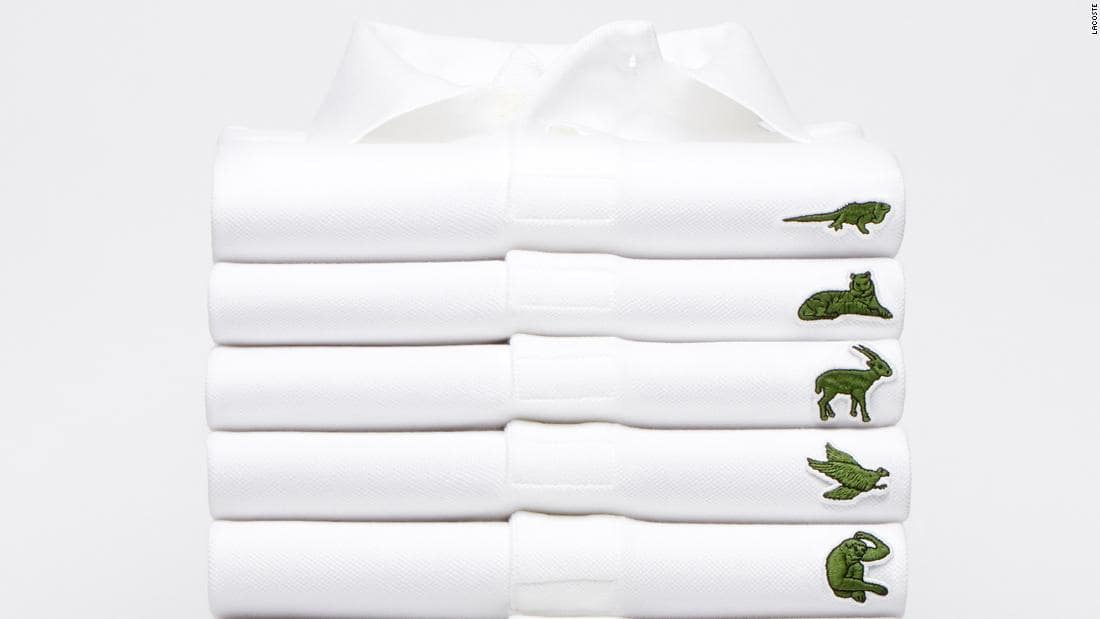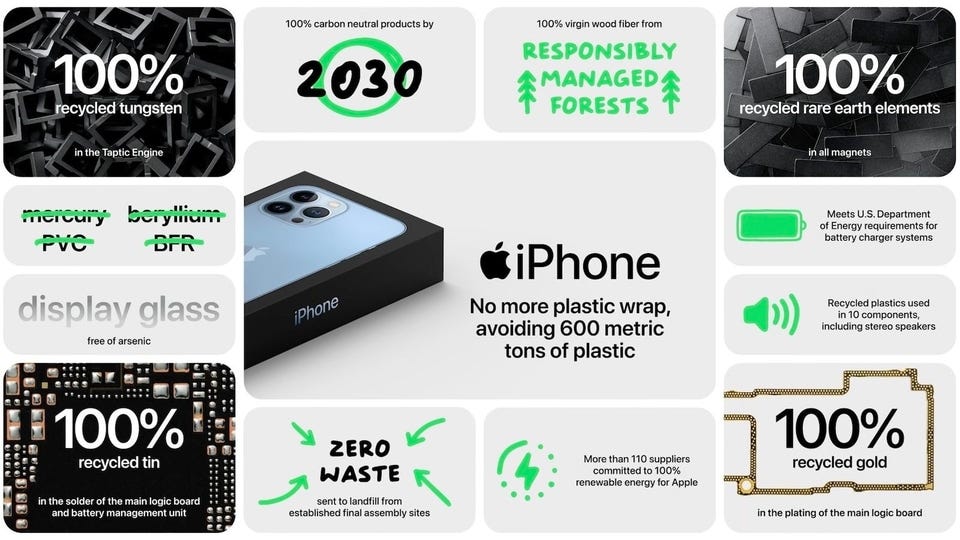🌿 5 Recipes for Success: Green Marketing Campaigns Analyzed
From the disappeared crocodile, a band's CSR report and endangered bees - 5 brands have shown how sustainability marketing can be done in a big way and what we can learn from them.
Hi 👋 I’m Florian Schleicher. This is the FutureStrategies newsletter of FUTURES. Thank you so much for reading along 💚 If you want to learn strategic marketing from me, then my Simple & Sustainable Marketing Academy is the perfect fit for you.
Marketing can be sustainable and achieve goals.
It is a superpower, so to speak. We can use the power to create positivity. We can get people to do good things, support sustainable brands, and protect the planet in the process.
How can we do this?
With Green Marketing.
It promotes products or services that are good for the environment and have a positive impact on society.
“Making promises and keeping them is a great way to build a brand.”
Seth Godin, US-amerikanischer Autor und Unternehmer
Green marketing campaigns or initiatives from these brands:
Lacoste, Coldplay, Apple, Puma, A1.
For each example, I briefly discuss the campaign itself, what is good about it, and what we can learn from it.
🐊 Lacoste - Save our species
I wrote about this campaign a few weeks ago. But because it is so great, I would like to describe it again and derive a few learnings from it.
The clothing brand has found a creative way to draw attention to global species extinction and species protection.
What is the campaign about?
Lacoste has made its symbolically pregnant brand crocodile disappear - and replaced it with animals that are threatened with extinction.
“Lacoste replaces its crocodile for the first time in its 85-year history.”
Independent
Exactly 10 variations were presented in the distinctive embroidered style on the shirts. Each line was produced in the same quantity as the number of animals still existing in the wild.
In the case of the Atlantic right whale, for example, there are 444 of them. Or a special species of dragonfly, the Risiocnemis seidenschwarzi, of which there are only 50 left.
But this campaign does not stop at raising awareness. Lacoste has also donated the proceeds to the respective species to preserve the specific species.
“Major tip of the hat to Lacoste + IUCN. We can’t wait to wear that proudly.”
National Geographic
What's good about the campaign?
The Lacoste crocodile is one of the most famous logos in the world. And that makes it a kind of megaphone to draw public attention to the campaign and the extinction of species. The brand is making its logo disappear to draw attention to endangered species.
I think that's a pretty strong and clever move.
Successes of the campaign:
Every "Animal Species Polo" was sold out within 24 hours.
The number of new customers increased by 76%.
The IUCN (International Union for Conservation of Nature), the campaign partner, received 4x more donations than usual.
Key Learning
We can win by putting the brand itself in the background and using the mouthpiece for good causes.
A campaign publicizes the brand's position and the limited editions also create a scarcity that arouses the interest of (new) customers.
Let's move on to the next example.
And this starts with a major problem for our climate:
Live concerts cause over 405,000 tons of greenhouse gas emissions every year.
That's a lot of output in an industry that hasn't dealt with sustainability practices and green marketing yet.
But one band is revolutionizing the music industry:
🕺Coldplay - Sustainability reporting
Coldplay's "Music of the Spheres" world tour demands a lot from the environment.
The travel and the energy consumption associated with the concerts are only part of it. For this reason, the band has set itself an ambitious goal:
A CO2-neutral world tour.
As part of their sustainability reporting, they undertake to take various measures to offset or minimize their environmental impact.
“So we’ve spent the last two years consulting with environmental experts to make this tour as sustainable as possible, and, just as importantly, to harness the tour’s potential to push things forward. We won’t get everything right, but we’re committed to doing everything we can and sharing what we learn.”
Coldplay
I think that's truly great. They are revolutionizing the music industry in many ways.
They are the first in the industry to deal with this intensively, communicate it publicly, and at the same time take many actions to achieve the goal.
The younger generation is very aware of sustainability. Coldplay is also picking up on this sensitivity by allowing fans to make their contribution to the CO2-neutral tour.
They are innovative. Their idea in an industry that has not yet been characterized by sustainability practices is simply inspiring.
And they make one thing clear: live concerts and sustainability can go hand in hand.
They worked together with SAP, among others - and I spoke to Christina Volk, Head of Cloud Core Marketing, about this in my podcast.
*** Please note: This interview was conducted in German. ***
A brief insight into some of the far-reaching and well-thought-out measures are:
The use of renewable energies and sustainable fuels,
working with SAP to launch an app that shows the lowest-carbon transportation options to the venue, or
the use of reusable LED wristbands that are distributed to the audience and returned after the show.
They also donate 10% of their income to charity organizations such as The Ocean Cleanup, Global Citizen, and ClientEarth.
The report is characterized by three principles:
Reduce - Less consumption, more recycling, and reduction of CO2 emissions.
Reuse - Supporting alternative, green technologies and developing new sustainable tours.
Recycle - Support sustainable projects and reduce more CO2 than we produce.
Through this focus and the courage to innovate and change, the band achieves many successes.
Do you want to make your marketing sustainable and achieve your goals?
That’s exactly my specialty at FutureS.
Simply contact me directly here or take a look at who we work for.
Successes of the campaign:
The "Music of the Spheres" tour generated 47% less CO2 emissions than the previous tour.
3,770 meals and 73 kg of toiletries were donated to the homeless by the tour catering.
5 million trees were planted (one for every concert-goer).
Key Learning:
Green and sustainable behavior takes courage. It is something that can be a natural part of life without reducing the quality of life and enjoyment.
Coldplay is also occupying the market, allowing their target group to go to their concerts with a clearer conscience and thus meeting an essential need.
“We’re trying to show that being green and clean is good business. It’s not something charitable, and it’s not something that makes you lose quality of life. It’s something that should just be a natural part of any business if you want the business to do well.”
Chris Martin, Sänger von Coldplay
And since we're on the subject of innovation and technology, let's move on to the next showcase example:
🍏 Apple - Mother Nature
Apple was the most valuable brand in the world in 2023. I have already described in detail in this newsletter how they achieve this with their marketing psychology and what is behind Apple's success.
But as we all know, with great power comes great responsibility. And these days, that has a lot to do with sustainability.
"By 2030, all Apple devices will have a net zero climate impact."
Tim Cook, CEO von Apple
They therefore seem to be aware of this brand responsibility. Because they have set themselves ambitious goals. And they communicate them transparently.
The illustration provides a brief overview of the achievements and commitments to date:
By implementing the "Mother Nature" campaign in 2023, Apple is publicly committing to its position and progress in terms of its sustainability progress and environmental responsibility.
“It wasn’t the titanium iPhone 15 casing, the USB-C charging port, or the ever-baffling Vision Pro updates that got top billing at Apple’s 2023 launch event on Tuesday — it was carbon neutrality.”
Heatmap
In the video, they address the results they have achieved so far to the sustainability strategy humorously and dramatically. They also use the Mother Nature character to highlight gender and inclusion issues.
What's good about it?
Apple is setting a new standard with a perfect balance of data, storytelling, and staging. They are only casually selling their product, but rather a vision of how we should live.
So Apple is doing its bit to become a truly sustainable company with a zero carbon footprint by 2030.
To ensure that a broad audience does find out what the status of progress is in terms of sustainability, Apple has chosen the additional video format. This enables them to reach a broad audience and has appeared in countless articles and commentaries.
Successes of the campaign:
Apple has undoubtedly mastered the art of communication.
They achieve incredible user engagement.
They convey a message.
They address all key sustainability aspects of their products (materials, power consumption, CO2 emissions)
The campaign is one of the best-executed CSR campaigns. Fully branded, but it doesn't feel like a marketing initiative.
The day after its release alone, the video already had over 515,000 views.
And that certainly makes the video much more successful than a sustainability report could possibly ever be.
Key Learning:
Apple is showing itself to be authentic and credible. Because they admit - even to the public - that some goals are still too far away from being achieved. They show what responsibility they have as a large company and how they are living up to it.
👟 Puma - RE:GEN REPORTS
The fashion industry still has the problem that different styles are required.
For example, the average garment is only worn 7 times before it is discarded. Yet a study on the life cycle of a garment states that it could be worn up to 200 times.
At the same time, the average US consumer throws away 37 kg of clothing every year. What's more, the fashion industry is responsible for 1/5 of global wastewater.
Puma is aware of these problems and has responded - with a sustainability podcast, the RE:GEN REPORTS. Puma is also responding to the podcast trend that I wrote about here.
Young Gen Zers accompany the listeners through the individual episodes. Puma spokespeople and representatives from the industry or NGOs are interviewed. They discuss the (correct) implementation and monitoring of sustainability.
In a nutshell, this is Puma's sustainability report in the RE:GEN REPORTS.
Human rights, circular economy, fair wages, plastic & oceans are the main topics of individual episodes.
And there are 10 of them in total.
10 episodes - 10 topics.
What's good about it?
The company is the first in the industry to present and demonstrate its sustainable progress simply.
"A sustainability report as a podcast has never been done before in our industry, but we believe it is an important step to connect with GEN-Z audiences and open up these important conversations.”
Anne-Laure Descours, Chief Sourcing Officer bei Puma
The initiative aims to make Puma's sustainability report accessible to a younger and broader audience. In doing so, they are responding to the wishes of the younger target group. Because they want brands to be more transparent when it comes to sustainability and target communication.
With the podcast, Puma is reaching their target group exactly where they are most represented, as 74% of Gen Z in the USA listen to podcasts monthly.
Successes of the initiative:
The brand leads many sustainability rankings within the clothing industry. For example, in the Fashion Sustainability Ranking or the Living Wage Financial Ranking.
In general, the clothing industry is not yet very progressive in terms of sustainability. However, Puma is aware of this and is already taking action in several areas. With their practices, they are well above average within the industry in terms of sustainability rankings.
The sustainability success is not only due to the 10 podcast episodes but to their entire sustainability strategy, which is set out in their 10FOR25 sustainability goals.
Key Learning:
Despite its leading position in many sustainability rankings, PUMA is aware that there is still a long way to go.
They are not resting on their laurels, but are tackling the issue of sustainable change and innovation themselves with a remarkable drive and openness.
They also use a popular medium - podcasts - appropriately.
To round off the examples, we come to the last animal example.
🐝 A1 - Urban Bees Oasis
In Slovenia, beekeeping is part of the lifestyle of many people. It is even included in the country's intangible cultural heritage.
However, the climate crisis is making it increasingly difficult for the hard-working little helpers to find food in late summer.
What is the campaign about?
A1 Slovenia used World Bee Day to help its inhabitants and bees. For a week, the heart of Ljubljana was transformed into an urban garden with a total of 3,500 honeybee plants.
"The busy bees keep our planet in balance, so help protect them. Join the initiative and sow honey plant seeds in your garden or in a pot on your balcony and feed the bees."
A1 Slovenia
People should take one of these plants home from the boxes provided to support urban beekeeping.
Through the campaign, the company raises awareness of climate change and the resulting negative effects on and for bees.
Passers-by are positively surprised and at the same time encouraged to actively help and participate.
Successes of the campaign:
Over 350,000 users were reached via social media.
Of these, there were 3,500 interactions with the target group,
And 88,330 video calls were made.
Key Learning:
Brands can get users to interact with environmentally friendly messages.
The biggest advantage of the campaign is the tangible experience in the physical space that A1 has created with its Urban Garden.
The brand gains authenticity through the positive messages that are shared about it on social media. Brands can get users to interact with environmentally friendly messages.
🔑 My conclusion
The inspiring examples are a small selection to show how effective good green marketing can be, that more and more is already happening in the market and what sustainable changes can be achieved.
Whether it is due to upcoming regulations (ESG reporting such as ESRS), changes in consumer behavior, or simply because the business basis (nature in the tourism sector) is being lost - the economy will and must change.
If we can strategically align marketing to equally address the planet, people, and profit, we can also create value and sustainable growth for all three.
“Marketing is the driver to a more sustainable future. We must turn sustainability from a must-do to an irresistible choice.”
Taide Guajardo, Chief Brand Officer P&G Global
With the right strategy, we can use the superpower of marketing for good.
I take away three lessons from these examples:
1️⃣ We have to be courageous. Then we can change something. Just because no one has tried before doesn't mean it's not possible. Quite the opposite. If we dare to take on a pioneering role and challenge the status quo, we can achieve all the more positive things. The examples of Coldplay and Puma show this.
"Some men see things as they are and say, "Why?' I dream of things that never were, and say, "Why not?"
George Bernard Shaw, playwright, politician, Nobel Prize winner for literature
2️⃣ The extraordinary attracts the attention of the masses. If something is different than usual, we as an audience are more receptive to it. We are happy to be part of something exclusive. Part of something special. When we experience something extraordinary in our everyday lives, we want to share it with our circle of friends so that they too can become a small part of something special. So there are no limits to the creativity of the marketeers. A1 and Lacoste have demonstrated this with their animal initiatives.
3️⃣ Authenticity is magical. Nothing beats honest insights into successes and failures. When progress, results, and goals are communicated transparently, this creates authenticity. And that, in turn, creates a great deal of credibility and a loyal following. Apple has figured out this trick and uses it purposefully and skillfully.
“Details matter. They create depth, and depth creates authenticity.”
Neil Blumenthal, CEO Warby Parker
👀 And now to you
Which green marketing campaign impressed you?
Feel free to share it in the comments or send me a message on LinkedIn.
I look forward to the exchange!
PS: You can also read this posting in German.






